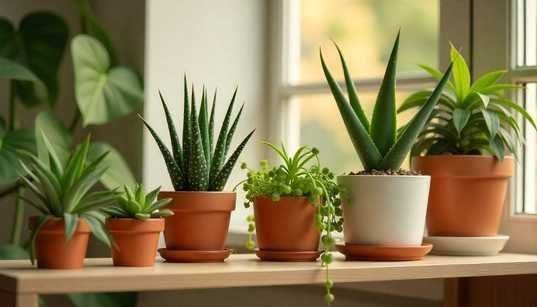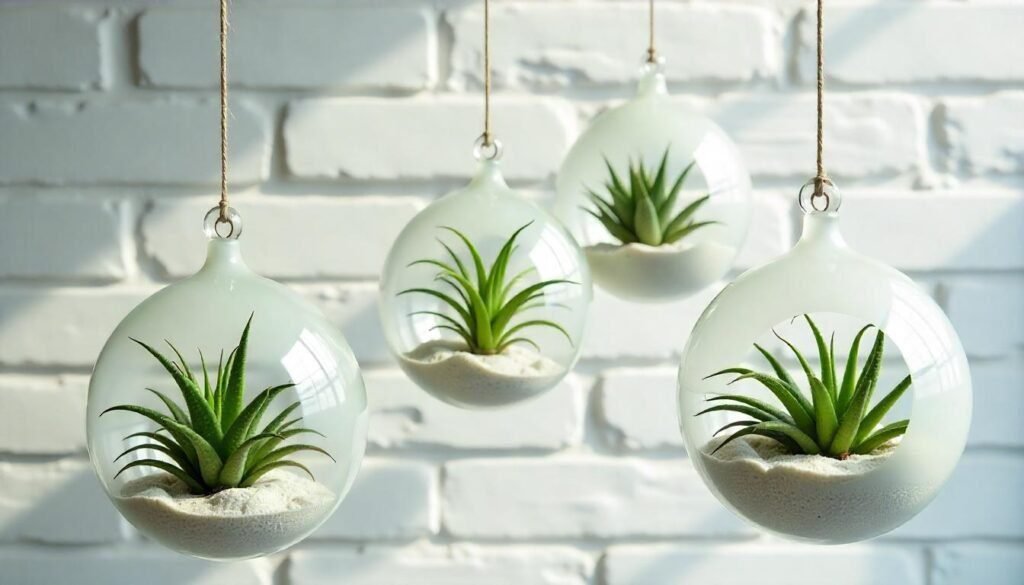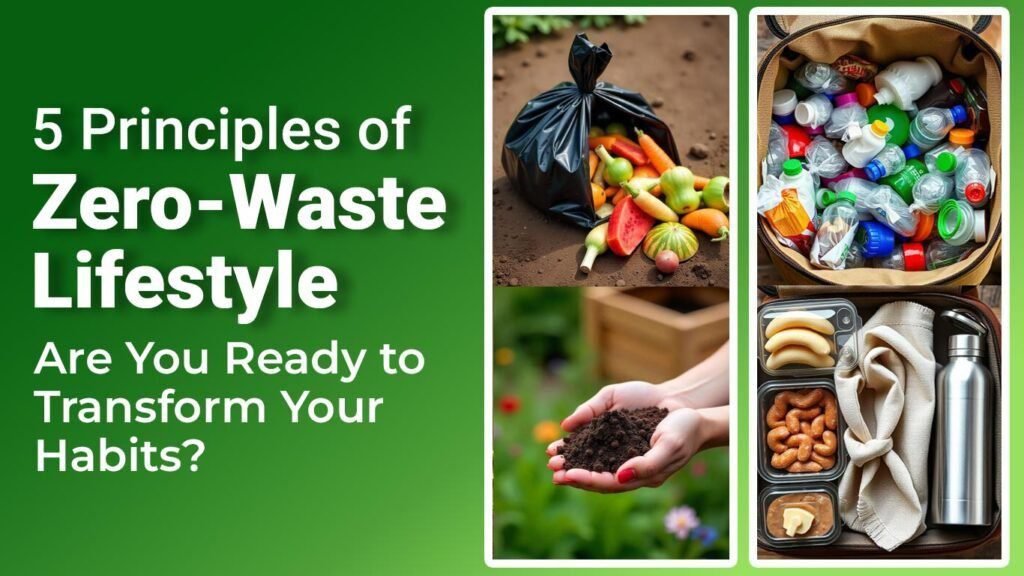Introduction
Perennial vegetables have emerged as a vital component in the quest for sustainable agricultural practices and low-maintenance gardening solutions. Unlike traditional annual crops, which require replanting each season, perennial crops offer an impressive and continuous yield over multiple years. This distinctive characteristic not only simplifies gardening efforts but also contributes significantly to food security, making perennial vegetables an attractive option for both novice and experienced gardeners alike.

One of the pivotal advantages of perennial vegetables gardening is the reduction in labor and resources associated with planting. By cultivating long-lasting vegetable garden ideas, individuals can enjoy bountiful harvests with minimal ongoing effort. This eco-friendly gardening approach promotes the use of hardy plants that thrive in diverse conditions, resulting in a reliable and sustainable vegetable garden year-round vegetable harvest. Gardeners can benefit from the resilience of perennial crops for beginners, as these plants typically require less frequent watering and fertilization compared to their annual counterparts.
Moreover, incorporating the best perennial vegetables into the garden can create a self-sustaining ecosystem. These plants often attract beneficial insects and help maintain soil health, which is essential for any gardening endeavor. As a result, they support the broader organic gardening movement, with an emphasis on biodiversity and environmental stewardship. By engaging in perennial vegetables gardening, one can participate in a cyclical gardening practice that aligns with modern sustainability efforts and promotes a greener planet.
In this blog post, we will delve deeper into various aspects of perennial vegetables, including practical tips for planting, maintenance, and harvesting. We will also explore the top vegetables to grow once, resulting in continuous yields and satisfaction for gardeners looking to simplify their routines and enhance their environmental impact.
Understanding Perennial Vegetables
Perennial vegetables are plants that live for multiple years, providing sustainable vegetable harvests without the need for replanting each season. Unlike annuals, which complete their life cycle within one growing season, or biennials, which typically require two years to produce seeds, perennial vegetables thrive for an extended period. This characteristic allows gardeners to cultivate a diverse range of long-lasting vegetable garden ideas, as these plants return year after year, often producing yields more reliably than their annual counterparts.
Also Read Trending Post
- 20 High Protein Meal Prep Ideas for Weight Loss, Muscle Gain & Busy Lifestyles (2025 Guide)
- Healthy and Sustainable Rooftop Gardening Guide for Beginners: Simple and Effective Methods
- Eco-Friendly Meal Prep Ideas: 10 Essential Tips for Healthy and Sustainable Eating
- Microplastics: Invisible Danger in Our Food, Water, and Environment
- Top 25 Plant-Based Protein Sources Chart: Your Ultimate Visual Guide for a Healthier Diet!
The growth cycles of perennial vegetables differ significantly from those of annual plants. While annuals complete their lifecycle quickly, leading to a short-term yield, perennials invest their energy into establishing robust root systems during their first year. This foundational growth phase not only enhances their ability to draw water and nutrients but also contributes to improved soil health. Over time, established perennial crops contribute to a richer ecosystem, promoting biodiversity and fostering habitats for beneficial insects and wildlife.
Integrating perennial vegetables into one’s gardening efforts represents a compelling approach to eco-friendly gardening, particularly for those interested in sustainable practices. By choosing the best perennial vegetables suited to their climate and soil conditions, gardeners can reduce the resource intensity typically associated with annual vegetable gardening. This method minimizes soil disturbance and erosion, leading to less dependency on chemical fertilizers and pesticides. Moreover, a garden filled with perennial crops can become a more resilient ecosystem, able to withstand fluctuations in weather, pests, and diseases.
For beginners in gardening with perennial plants, there are various low-maintenance vegetables that are easy to grow and offer rewarding harvests. By focusing on perennial crops, individuals can embark on a journey that not only yields fresh produce but also fosters an enduring connection to nature, thereby enriching their gardening experience and promoting sustainable practices for future generations.

Top 10 Perennial Vegetables to Consider
In the realm of perennial vegetables gardening, selecting the right plants can significantly enhance your sustainable vegetable garden year-round vegetable harvest. Below is a detailed table featuring ten top perennial vegetables, including their growth conditions, cultivation practices, and nutritional benefits, making it easier for gardeners, especially beginners, to make informed choices.
| Vegetable | Growth Conditions | Best Practices for Cultivation | Nutritional Benefits |
|---|---|---|---|
| Asparagus | Full sun; well-drained soil | Maintain pH 7.0; mulch to retain moisture | Rich in vitamins A, C, E, and K |
| Rhubarb | Partial shade or full sun; rich soil | Water regularly; remove flower stalks | High in antioxidants; good source of fiber |
| Artichokes | Full sun; well-drained, fertile soil | Provide winter protection; prune in spring | High in vitamins C and K; beneficial for digestion |
| Sea Kale | Full sun; sandy, well-draining soil | Use mulch; grow in clumps for best yield | Source of vitamins A and C; rich in minerals |
| Perpetual Spinach | Partial shade; moisture-retentive soil | Regular harvest encourages new growth | High in vitamins A, C, and iron |
| Garlic Chives | Full sun; well-drained soil | Cut back foliage after flowering; divide plants every few years | Good source of vitamins A and C; high in antioxidants |
| Ostrich Fern | Partial shade; rich, moist soil | Keep soil consistently moist; protect from drought | High in vitamins K and C; good for gut health |
| Yacon | Full sun; rich, well-draining soil | Water regularly; harvest roots in fall | Rich in antioxidants; aids in digestion |
| Chickweed | Partial shade; adaptable soil | Thin plants to increase growing space | High in vitamins, minerals; low in calories |
| Jerusalem Artichoke | Full sun; various soil types | Manage with regular watering; control pests | Rich in iron and potassium; boosts energy levels |
Utilizing these best perennial vegetables not only minimizes gardening efforts due to their low-maintenance needs but also encourages eco-friendly gardening tips that promote sustainability. By replacing traditional annuals with perennial crops for beginners, gardeners can establish long-lasting vegetable garden ideas that yield nutritious harvests for many years.
Cultivation Techniques for Perennial Vegetables
Successful perennial vegetables gardening begins with proper soil preparation, a vital foundation for a sustainable vegetable garden year-round vegetable harvest. It is recommended to amend the soil with organic matter, such as compost or well-rotted manure, to improve fertility and drainage. Conducting a soil test prior to planting will help determine pH levels and nutrient content, allowing for tailored amendments based on specific crop needs.
When it comes to planting, selecting the best perennial vegetables is crucial. Crops like asparagus, rhubarb, and artichokes are excellent choices for beginners due to their resilience and low-maintenance requirements. Before planting, ensure that the site receives adequate sunlight and is free from competing weeds. Space the plants appropriately to encourage airflow and minimize disease incidence.
Pest management is another significant consideration in perennial crops gardening. Utilizing integrated pest management (IPM) strategies helps maintain a healthy ecosystem. This can include encouraging beneficial insects, such as ladybugs and parasitic wasps, which naturally control pest populations. Additionally, employing companion planting can deter harmful insects and promote plant health. Regularly monitoring the plants for signs of distress can also aid in early intervention, ensuring a thriving garden.
Watering strategies should focus on the specific needs of the perennial plants being cultivated. Most perennial vegetables prefer deep, infrequent watering rather than shallow, frequent irrigation, allowing root systems to grow deep into the soil. Mulching around the base of the plants helps retain moisture while reducing competition from weeds. Furthermore, using eco-friendly gardening tips, such as rainwater harvesting, can further enhance sustainability.
Finally, propagating perennial vegetables through division or cuttings can expand your vegetable garden efficiently. Healthy root systems can easily be divided in early spring or fall, ensuring new plants for an enhanced long-lasting vegetable garden. By integrating these cultivation techniques, gardeners will not only enjoy the fruits of their labor but also contribute to sustainable gardening practices for future generations.
Harvesting and Maintenance of Perennial Vegetables
Perennial vegetables gardening offers a unique advantage for those interested in cultivating a sustainable vegetable garden year-round. These plants are designed to live and produce for multiple growing seasons, minimizing the need for replanting and creating a low-maintenance vegetable garden. The first step in reaping the benefits of perennial crops for beginners is understanding the optimal time and method for harvesting. Most perennial vegetables can be harvested once they have reached maturity, which varies depending on the specific type. For instance, asparagus typically yields its first harvest in the second or third year, while rhubarb can produce stalks more quickly. A general guideline is to look for vigorous growth as a sign that harvesting can begin.
Effective harvesting techniques help ensure maximum yield. Gently cutting or twisting the edible parts from the base avoids damaging the plant, allowing it to continue thriving for future harvests. Maintaining the health of these perennial plants also requires seasonal maintenance tasks. Regular pruning not only encourages new growth but also helps to prevent diseases; removing dead or yellowing foliage is particularly important during the off-season. Additionally, mulching with organic materials can provide nutrients, suppress weeds, and retain moisture, thereby enhancing the resilience of your long-lasting vegetable garden.
Despite the advantages of gardening with perennial plants, challenges may still arise. Pest management is crucial in maintaining a productive ecosystem. Eco-friendly gardening tips such as introducing beneficial insects or utilizing natural repellents can help combat common issues, minimizing chemical use. Furthermore, remaining vigilant for signs of nutrient deficiency allows gardeners to address potential problems promptly. By understanding and implementing effective harvesting techniques and maintenance practices, gardeners can enjoy the rewards of perennial vegetables, achieving a sustainable vegetable garden that thrives with minimal effort.
Integrating Perennial Vegetables into Your Garden Design
Incorporating perennial vegetables into your garden design presents an innovative approach to creating a sustainable vegetable garden that not only thrives year-round but also enhances the visual appeal of your landscape. These low-maintenance vegetables are ideal for gardeners seeking to simplify their gardening tasks while still enjoying a diverse and productive harvest.
One effective method for integrating these resilient crops is through the principles of permaculture. This sustainable gardening philosophy emphasizes the use of perennial plants alongside annuals, thereby creating a self-sustaining ecosystem. For instance, combining best perennial vegetables such as asparagus, rhubarb, or artichokes with green manures can improve soil health and minimize the need for external inputs. Such practices allow gardeners to enjoy the benefits of edible plants while fostering a vibrant, eco-friendly environment.
Additionally, companion planting strategies can enhance both growth and aesthetics. By arranging perennial vegetables with ornamental plants, gardeners can establish a harmonious balance that serves double duty—providing both beauty and produce. For example, integrating vibrant flowers with your long-lasting vegetable garden ideas not only attracts beneficial insects but also adds visual interest to the garden layout. Consider using robust plants such as kale or Swiss chard, which can hold their own beside flowering varieties like nasturtiums or marigolds.

To create an efficient space, think vertically by utilizing trellises or raised beds, which allow perennial crops for beginners to thrive without consuming too much ground space. This approach not only promotes airflow but also helps with the accessibility of your low-maintenance vegetables. Consequently, your garden can flourish throughout the seasons, resulting in a sustainable vegetable garden that requires minimal intervention.
By thoughtfully incorporating perennial vegetables into your garden design, you create a flourishing ecosystem that promotes biodiversity and sustainability. Embarking on this gardening journey can yield an abundance of produce while offering an aesthetically pleasing landscape that you can enjoy year after year.
Food Security and Sustainability through Perennials
Perennial vegetables are increasingly recognized for their potential to enhance food security and promote sustainable agricultural practices. Unlike traditional annual crops, which require replanting each season, perennial crops offer long-lasting yields, contributing to a more stable and resilient food system. Their ability to produce food year-round significantly supports sustainable vegetable garden efforts and addresses the growing need for reliable food sources in various communities.
The environmental benefits of cultivating perennial vegetables are numerous. By establishing deep root systems, these plants improve soil structure and health, reduce erosion, and enhance water retention. This emphasizes the importance of eco-friendly gardening tips that encourage the use of low-maintenance vegetables, which can contribute to sustainable practices while lessening the workload of gardeners. Furthermore, perennial crops are known to sequester carbon, making them an effective tool in combating climate change and promoting a healthier environment.
Across the globe, numerous communities have adopted perennial vegetable gardening to boost their local food systems. For instance, regions facing harsh climates have successfully integrated the best perennial vegetables suitable for their conditions, ensuring a steady supply of nutritious produce. Case studies reveal how local governments and organizations are implementing educational programs to promote gardening with perennial plants, facilitating workshops that equip residents with the necessary skills. These initiatives demonstrate that perennial crops for beginners can be accessible and rewarding, helping households achieve food sovereignty.
Nevertheless, challenges do persist. Some gardeners may encounter difficulties in sourcing seeds or understanding the best practices for maintaining perennial crops. To overcome these barriers, communities can develop local networks that share resources, knowledge, and expertise. By fostering a collaborative environment, individuals can exchange ideas and strategies for creating long-lasting vegetable garden ideas that are both productive and sustainable. Through these combined efforts, we can unlock the full potential of perennial vegetables, ensuring food security and environmental sustainability for generations to come.
Frequently Asked Questions about Perennial Vegetables
Perennial vegetables have gained considerable attention among gardeners seeking low-maintenance gardening options. A common inquiry is about the best perennial vegetables for beginners. Some excellent choices include asparagus, rhubarb, and chives. These crops not only grow repeatedly without the need for replanting each year but also provide continuous yield, making them ideal for a sustainable vegetable garden that thrives with minimal effort.
Another frequently asked question centers on disease resistance. Perennial vegetables tend to be hardier than annual varieties, often exhibiting innate resistance to common pests and diseases. This resilience contributes to the overall health of a long-lasting vegetable garden. However, it is still crucial for gardeners to monitor their plants regularly and implement eco-friendly gardening tips, such as crop rotation and organic pest management, to maximize health and yield.
Cooking with perennial vegetables also raises questions. These unique plants offer flavors and textures that can enhance various dishes. Incorporating perennial crops into your meals is straightforward; for example, asparagus can be steamed or grilled, while rhubarb is perfect for pies and jams. Exploring recipes involving perennial plants can lead to exciting culinary discoveries while promoting a sustainable diet.
Lastly, the role of perennial plants in climate change mitigation is an essential topic. By cultivating perennial vegetables, gardeners contribute to soil health and biodiversity, which are crucial in combating climate change. These plants require less frequent tilling, reducing soil erosion and maintaining carbon levels in the ground. This holistic approach to gardening aligns with sustainable practices, ensuring a year-round vegetable harvest while fostering an eco-friendly environment.
As the interest in gardening with perennial plants continues to grow, understanding these aspects is vital for any aspiring gardener. They not only promote sustainability but also simplify the gardening experience.

Conclusion
In concluding our exploration of perennial vegetables gardening, it is essential to recognize the multitude of benefits these plants offer. By incorporating perennial crops into your garden, you not only create a low-maintenance vegetable garden but also establish a sustainable vegetable garden that facilitates year-round vegetable harvest. This approach minimizes the need for constant replanting and allows gardeners to focus on nurturing their existing plants.
The best perennial vegetables can significantly enhance an eco-friendly gardening experience, as they thrive with lower input requirements compared to annual varieties. As we have discussed, gardening with perennial plants can yield greater efficiency, reducing labor while promoting biodiversity. These long-lasting vegetable garden ideas are particularly suited for beginner gardeners looking to transition into more sustainable practices, as they ease the learning curve associated with growing food.
Moreover, the involvement in perennial vegetables gardening fosters a sense of responsibility towards the environment. As you cultivate these plants, you become part of a larger movement towards more resilient food systems that honor ecological principles. The overall outcome is not only a diverse and rich harvest but also a contribution to the preservation of resources for future generations.
We encourage readers to consider some of the top vegetables to grow once, allowing them to maximize their garden’s potential without the repetitive labor of traditional annual gardening. By implementing these eco-friendly gardening tips, you can embark on a rewarding journey towards creating a sustainable outdoor living space. As you explore these options, you will find that perennial vegetables not only simplify your gardening endeavors but also contribute to a more self-sufficient lifestyle. Embrace this opportunity for a greener future and take the first steps towards enriching your gardening experience today.












Thank you for sharing excellent informations. Your site is very cool. I’m impressed by the details that you?¦ve on this site. It reveals how nicely you perceive this subject. Bookmarked this website page, will come back for more articles. You, my friend, ROCK! I found simply the information I already searched all over the place and just couldn’t come across. What a great site.
Your comment is awaiting moderation.